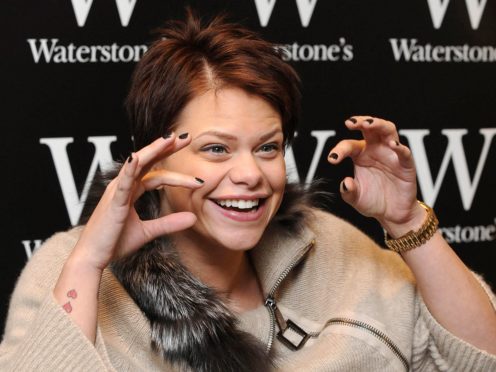Channel 4’s chief executive has said things broadcast on programmes such as Big Brother a decade or more ago would not be deemed acceptable now.
Speaking before the Digital, Culture, Media and Sport (DCMS) Committee inquiry into reality TV, Alex Mahon referenced a documentary the broadcaster will air this year about former Big Brother contestant Jade Goody.
Goody was a contestant on Big Brother in 2002, and in 2007 took part in the celebrity edition of the show.
She became embroiled in a well-documented race row, attracting thousands of complaints about the treatment of Indian contestant Shilpa Shetty.

Questioned by DCMS committee chairman Damian Collins on whether boundaries for reality programmes are being pushed by “desire and appetite for these programmes to be made” or whether it is down to production companies “trying to come up with more creative, off-the-wall ideas to get commission”, Ms Mahon said she would counter it was “going the other way”.
She said: “We are making a three-part documentary about the life of Jade Goody, who came out of the original Big Brother. When you look back at that, when you look back at what happened to Jade, how she was treated in the tabloid press, what was put on air, I would say that public taste has moved the other way – there are things in that show that we would probably question whether we would do now. In fact Ofcom upheld a point about the show.”
Goody died in 2009 after being diagnosed with cervical cancer in 2008 and Channel 4 revealed last year it was making a programme about her.
Big Brother aired on Channel 4 for 10 years before moving to Channel 5.
Ms Mahon continued: “I think the support we put in place, the protocols we put in place and the expectations of society are higher now. I think that has changed for the positive. Much of that negative discourse has moved on to social media more than it has on mainstream television.”
Asked for an example of something involving Goody that was shown when she was on the programme that would be deemed unacceptable now, Ms Mahon said that “clearly mistakes were made in the programme”.
Probed further, she said: “Obviously this is difficult because I’ve seen the documentary and the committee hasn’t had a chance to see it yet… I think there were ways, in what went on in the press and what went on in television then, about the cycle about how people would be discussed in the press that I don’t think society would tolerate now.
“So I think the expectations of the audience and on ourselves as broadcasters and producers has moved to where we have much stronger contributor care protocols in place and we wouldn’t let those things occur now.”
Asked again for a specific example about the “limits” for what is acceptable to show on reality TV programmes, Ms Mahon said: “I think clearly it was a mistake to broadcast racist and offensive material, and that was upheld at the time.
“Aside from that, on a show I wasn’t involved in 10 to 15 years ago, it’s hard to be more specific.
“I can’t give you a specific item from the show as it was then as it was sort of 15 years ago now, Big Brother, but I think if you think about how that show worked and what the contestants were pushed to on it, I think the care protocols we have in place nowadays wouldn’t allow things to go as far as they did.”
Earlier in the session, Ms Mahon said Channel 4 did not make programmes involving members of the public merely because they are cheap, and to “fill the schedules”.
She said there is a “huge public appetite” for programmes that show “different groups of people doing things in society”, such as observational programmes and reality TV.
